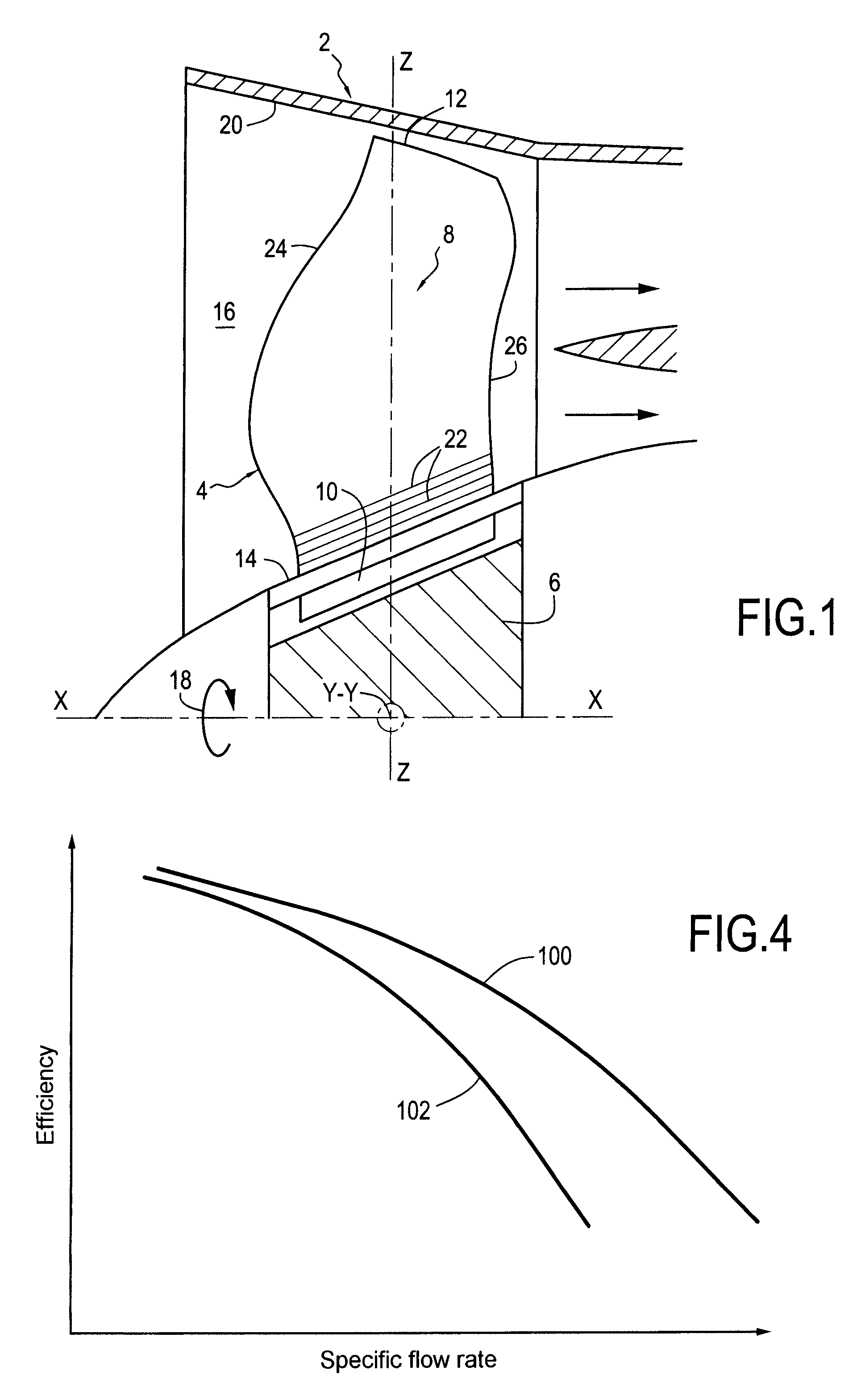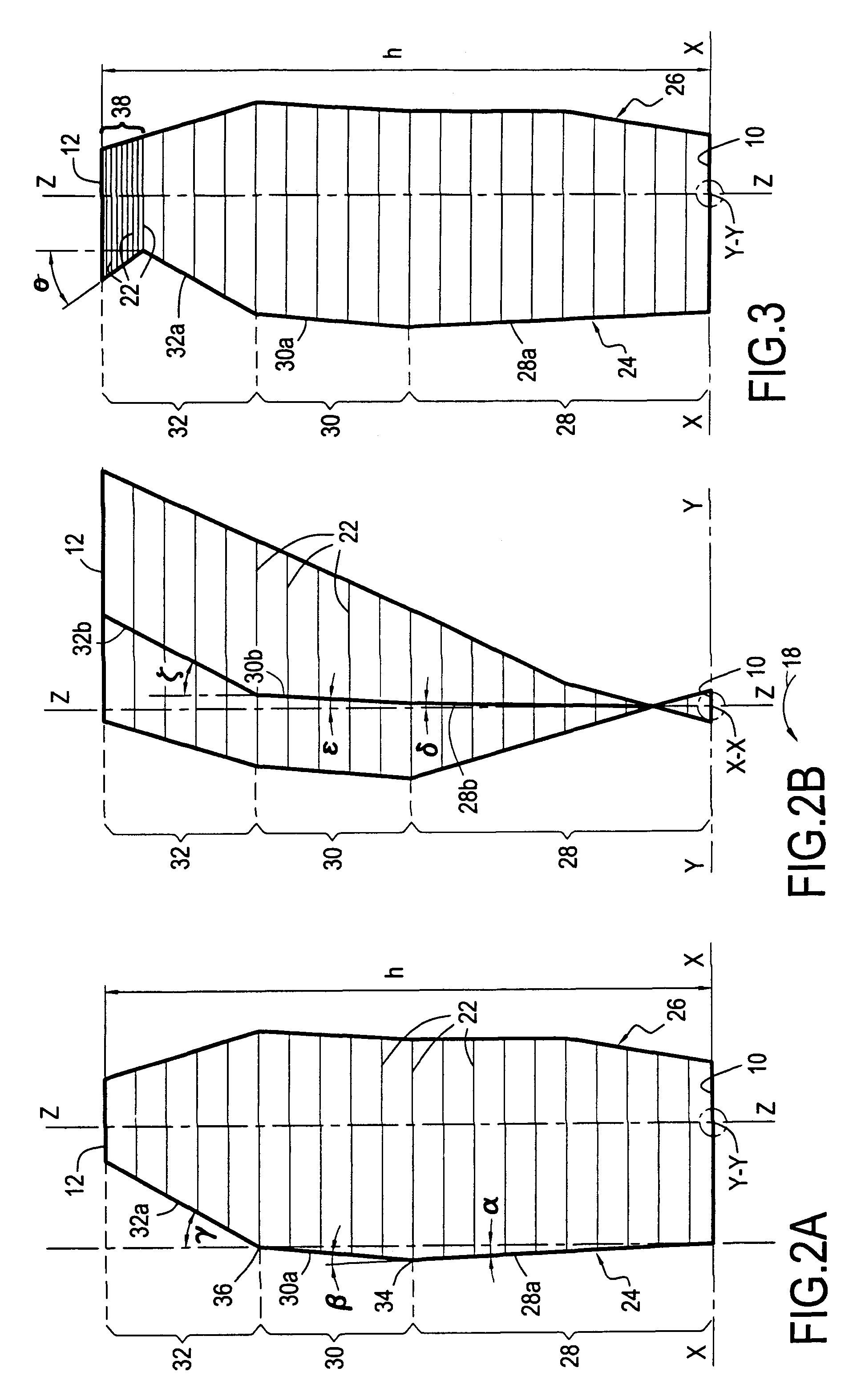Swept turbomachine blade
a turbomachine and blade technology, applied in the direction of machines/engines, mechanical apparatus, liquid fuel engines, etc., can solve the problems of large noise generation, very severe mechanical stress on the blade, and source of noise, so as to reduce noise generation, reduce noise generation, and reduce noise generation
- Summary
- Abstract
- Description
- Claims
- Application Information
AI Technical Summary
Benefits of technology
Problems solved by technology
Method used
Image
Examples
Embodiment Construction
[0021]FIG. 1 is a diagrammatic and fragmentary view of the fan 2 of an aviation turbomachine. It is made up of a plurality of blades 4 that are regularly spaced apart around a disk 6 (or hub) of a rotor centered on a longitudinal axis X-X of the fan.
[0022]In known manner, each blade 4 comprises in particular an airfoil 8, a root 10, and a tip 12. The root 10 of the blade is mounted on the rotor disk 6 and is connected to the airfoil 8 via a platform 14 defining the inside of the flow passage 16 of a gas stream passing through the fan. The rotor disk 6 is driven in rotation about the longitudinal axis X-X in the direction marked by arrow 18. The tip 12 of the blade is situated facing the inside face 20 of a stationary annular casing of the fan, said face 20 defining the outside of the passage 16.
[0023]The airfoil 8 is made up of a plurality of blade sections 22 that are stacked along a radial axis Z-Z perpendicular to the axis X-X. The blade sections 22 are situated at increasing rad...
PUM
 Login to View More
Login to View More Abstract
Description
Claims
Application Information
 Login to View More
Login to View More - R&D
- Intellectual Property
- Life Sciences
- Materials
- Tech Scout
- Unparalleled Data Quality
- Higher Quality Content
- 60% Fewer Hallucinations
Browse by: Latest US Patents, China's latest patents, Technical Efficacy Thesaurus, Application Domain, Technology Topic, Popular Technical Reports.
© 2025 PatSnap. All rights reserved.Legal|Privacy policy|Modern Slavery Act Transparency Statement|Sitemap|About US| Contact US: help@patsnap.com



